
Complete E-Bike Tire Replacement Guide: Step-by-Step
Empowering Your Tire Change
A flat or worn-out e-bike tire can feel scary. But you've come to the right place for help. While the added weight and hub motor of an e-bike create unique problems compared to a standard bicycle, an e-bike tire replacement is a skill that is absolutely within your reach.
With the right guidance and a little patience, you can save money. You can also gain the confidence that comes from maintaining your own ride. This complete guide is designed to help you tackle the job yourself. We will walk you through every step, making sure you have the knowledge to do it safely and correctly.
Here's our roadmap:
* Finding the critical signs that your tire needs replacing.
* Choosing the perfect new tire for your e-bike and riding style.
* A detailed, step-by-step guide for the entire replacement process.
* Important safety checks to perform before you ride again.
Signs of Tire Wear
E-bike tires face more stress than their non-electric counterparts due to the bike's weight and the motor's torque. This means they wear out faster. Knowing what to look for is key to staying safe and preventing a sudden failure on the road. Quality e-bike tires typically last between 2,000 to 3,000 miles. But this varies greatly with riding style, terrain, and tire pressure.
Here are the key visual signs that it's time for an e-bike tire replacement:
- Tread Wear: The most obvious sign is when the center of your tire tread is no longer rounded but looks flat or squared-off. Many tires also have small holes or grooves called wear indicators, and once these disappear, the tire is finished.
- Cuts and Gouges: Small nicks are normal. But any cut deep enough to expose the whitish or tan casing threads underneath is a major risk.
- Cracking or Dry Rot: Look closely at the sidewalls for a web of fine cracks. If you see a web of fine cracks, the rubber has become old, brittle, and lost its flexibility.
- Constant Punctures: If you suddenly start getting flat tires frequently, it's often a sign that your tire tread is worn thin. This offers little protection against road debris.
- Bulges or Deformities: Any unusual lump, bubble, or bulge on the tire surface shows a structural failure within the tire's casing. Stop riding immediately—this tire is on the verge of blowing out.
DIY or Bike Shop?
Deciding whether to perform the e-bike tire replacement yourself or take it to a professional is a personal choice. It's based on your time, budget, and confidence. While a DIY approach is more affordable, a bike shop offers expertise and convenience, which can be valuable, especially for complex rear-hub motor setups.
A professional shop typically charges between $25 and $60 for labor per tire. Rear hub motor wheels often cost more due to the extra steps involved.
Here's a breakdown to help you decide:
| Factor | DIY E-Bike Tire Replacement | Professional Bike Shop Service |
|---|---|---|
| Estimated Cost | Cost of tire and tube only ($40 - $100+) | Labor ($25 - $60+) + cost of tire and tube |
| Time Required | 1-2 hours for first-timers, 30-45 mins for experienced | Drop-off and pick-up time, shop turnaround time |
| Required Tools | Initial investment in wrenches, tire levers, pump | None |
| Pros | Cost savings, valuable skill learned, sense of accomplishment | Expert service, correct tools used, saves time and frustration, guaranteed work |
| Cons | Can be frustrating, risk of damaging components, requires tools | Higher cost, bike is out of commission during service |
Choosing the Right Tire
Selecting the right tire is the most important decision you'll make in this process. E-bike specific tires are engineered differently. They feature stronger sidewalls to handle the extra weight, more robust puncture protection layers, and rubber compounds designed to manage higher speeds and greater torque without wearing out early.
To choose the best tire, you need to match it to your primary riding style. This framework will help you select a tire that enhances your e-bike's performance, safety, and even battery range.
Understanding Tire Size: Before you buy, look at the sidewall of your current tire. You will see a set of numbers like 26 x 4.0 or 27.5 x 2.2. The first number is the wheel diameter, and the second is the tire width.
| Tire Type | Best For (Riding Style) | Puncture Resistance | Rolling Resistance (Battery Impact) | Typical Price Range |
|---|---|---|---|---|
| Commuter/Touring | Paved roads, bike paths, daily transport. Prioritizes durability and range. | High to Very High | Low (More efficient) | $40 - $80 |
| Fat Tire | Sand, snow, rough trails, maximum comfort. Prioritizes grip and cushioning. | Medium to High | High (Less efficient) | $60 - $120+ |
| Mountain Bike (MTB) | Dirt trails, gravel roads, aggressive off-road riding. Prioritizes traction. | Medium | Medium to High | $50 - $90 |
Your Essential Toolkit
Having the right tools on hand before you start is the secret to a smooth e-bike tire replacement. Scrambling to find a wrench mid-job is a momentum killer. We've broken the list into must-haves and nice-to-haves.
Must-Have Tools:
* New e-bike tire and inner tube
* Tire levers (We recommend strong plastic or metal-core levers, as e-bike tires can be very stiff)
* Wrench set or adjustable wrench (For the large axle nuts, typically 18mm or 19mm)
* Hex/Allen key set (For brake calipers or other small bolts)
* Floor pump with a pressure gauge
Nice-to-Have Tools:
* Bike repair stand (Highly recommended since the weight of an e-bike makes working on it without a stand very difficult)
* Nitrile gloves (Keeps the grease and grime off your hands)
* Small zip ties (Useful for re-securing the motor cable to the frame)
* Rag (For cleaning parts and wiping hands)
The Step-by-Step Guide
This is where we get our hands dirty. Follow these steps carefully, and you'll have that new tire mounted in no time.
Critical Safety Warning: Always disconnect the battery or turn off the power completely before starting any work on your e-bike.
Step 1: Prepare and Remove Wheel
- Secure the Bike: The best option is to mount the bike in a repair stand. If you don't have one, carefully flip the bike upside down, resting it on its saddle and handlebars.
- Handle the Brakes: If you have rim brakes, release the tension. For disc brakes, you may need to remove the caliper from the frame with a hex key to provide enough clearance to remove the wheel.
-
Address the Rear Wheel (The Hard Part): This is the biggest difference in an e-bike tire replacement.
- Disconnect the Motor Cable: Carefully locate the hub motor cable, which is a thick cable running from the motor to the frame. There will be a waterproof connector, often with small arrows for alignment.
- Loosen Axle Nuts: Using your wrench, loosen the large axle nuts on both sides of the wheel. They can be very tight, so you may need to apply steady, firm pressure to break them loose.
- Note the Washers: Pay close attention to any special "torque" washers and note their orientation. They are essential for safety and must be reinstalled correctly.
- Remove the Wheel: With the nuts and washers off, the wheel should drop out of the frame.
Step 2: Remove Old Tire and Tube
- Deflate Completely: If there's any air left, press the pin inside the valve to let it all out.
- Break the Bead: Starting on the side opposite the valve stem, insert a tire lever under the edge (bead) of the tire and pry it up and over the rim wall. Hook this lever to a spoke.
- Work Around the Rim: Insert a second lever a few inches away and do the same thing. Slide this second lever around the rim to pop the rest of the bead off.
- Remove the Tube and Tire: Once one side of the tire is off the rim, pull the old inner tube out. Then, the tire should come off the rim easily.
Step 3: Install New Tire and Tube
- Inspect the Rim: Run your finger along the inside of the rim and check the rim tape (the strip covering the spoke holes) for any sharp edges or exposed spokes that could puncture your new tube.
- Mount One Side: Work one bead of the new tire onto the rim, which should be relatively easy to do by hand.
- Prepare the New Tube: Inflate the new tube just enough so it holds a round shape. This prevents it from getting twisted or pinched during installation.
- Insert the Tube: Place the tube inside the tire, starting by pushing the valve stem through its hole in the rim.
- Seat the Second Bead: Starting at the valve, use your thumbs to push the second bead of the tire into the rim, working your way around both sides at the same time. The last section will be the tightest, so try to roll it on with your palms.
Step 4: Inflate and Seat Tire
- Inflate: Using your floor pump, inflate the tire to the recommended PSI (pounds per square inch) listed on the tire's sidewall.
- Check the Seating: As you inflate, watch the molded line on the tire near the rim, which should be an even distance from the rim all the way around on both sides. You may hear one or two loud "pops" as the tire bead snaps securely into place—this is a good sign.
- Adjust if Needed: If the bead line is uneven, deflate the tire, push the tire bead into the center of the rim to re-center it, and try inflating again.
Step 5: Reinstall the Wheel
- Position the Wheel: Carefully guide the wheel back into the dropouts of the frame.
- Check Washers and Axle: Make sure the axle is fully seated and that any torque washers are in their correct orientation.
- Reconnect Motor Cable: For a rear wheel, securely reconnect the hub motor cable by making sure the alignment arrows line up and the connection is pushed together completely. Re-attach any zip ties you may have cut.
- Tighten and Secure: Hand-tighten the axle nuts, then use your wrench to tighten them firmly. Re-attach the brake caliper if you removed it.
E-Bike Pro Tips
Generic guides often miss the small details that make an e-bike tire replacement frustrating. Here are the pro tips that make all the difference.
- Handling the Hub Motor Cable: Be gentle and never pull by the wire, only the sturdy plastic connector. The small alignment arrow on the connector is your best friend during reassembly.
- Managing the Weight: If you don't have a stand, ask a friend for help since the "buddy system" makes lifting and flipping the heavy bike much safer and easier.
- Torque Arms & Washers are Critical: These special washers prevent the powerful motor from spinning the axle out of the frame dropouts, so their correct placement is a non-negotiable safety step. We always recommend taking a quick smartphone photo of the axle, washers, and motor cable routing before you take anything apart.
- Dealing with "Impossible" Tight Tires: If a tire feels impossibly tight to remove or install, the trick is to push both beads of the tire into the deep center channel of the rim all the way around. This creates the slack you need to easily pry the final section over the rim wall.
Final Pre-Ride Inspection
You're almost done, but this final checklist is the most important step. It ensures your hard work results in a safe and reliable ride. Never skip this pre-ride inspection after an e-bike tire replacement.
- Brake Check: Squeeze the brake levers hard to make sure the levers feel firm, not spongy. Spin the wheel and ensure the brakes engage correctly and stop the wheel effectively.
- Axle Nut Check: Give the axle nuts one final check with your wrench to ensure they are securely tightened.
- Power System Check: Reconnect your battery and power on the e-bike to make sure the display turns on and there are no error codes. Give the throttle or pedal assist a quick test (with the wheel off the ground) to confirm the motor is responding correctly.
- Listen and Look: Spin the wheel and listen for any unusual rubbing or clicking sounds, then give the tire a final visual inspection to confirm it's seated properly.
Frequently Asked Questions
Q: How often should I replace my e-bike tires?
A: E-bike tires typically last 2,000 to 3,000 miles, but this depends on your riding style, terrain, and tire pressure. Check your tires regularly for signs of wear like flat tread, cuts, or cracking.
Q: Can I use regular bike tires on my e-bike?
A: It's not recommended. E-bike specific tires have stronger sidewalls and better puncture protection to handle the extra weight and torque from the motor. Regular bike tires may wear out faster and be less safe.
Q: What tire pressure should I use for my e-bike?
A: Check the sidewall of your tire for the recommended PSI range. E-bikes typically need higher pressure than regular bikes due to their extra weight. Proper inflation is crucial for performance, safety, and battery range.
Q: Is it harder to change a rear tire on an e-bike than a front tire?
A: Yes, the rear tire is more challenging because you need to disconnect the motor cable and deal with heavier components. The front tire replacement is similar to a regular bike. Many people choose to do front tires themselves but take rear tires to a shop.
Q: What should I do if my new tire won't seat properly on the rim?
A: First, deflate the tire completely and push both tire beads into the center channel of the rim. Then re-inflate slowly while checking that the bead line stays even around the rim. If it's still uneven, you may need to deflate and reposition the tire again.




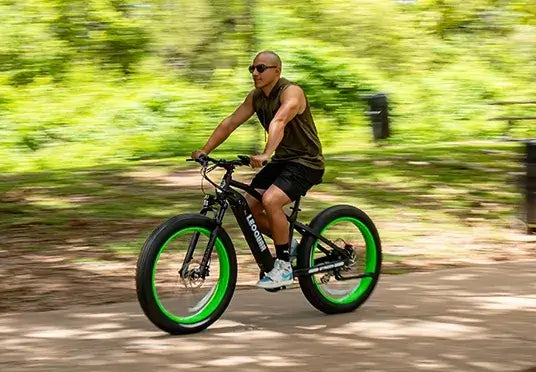



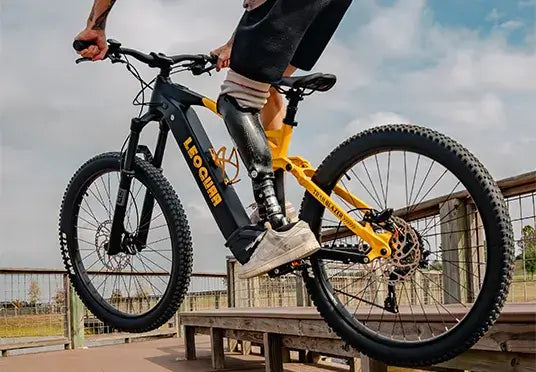
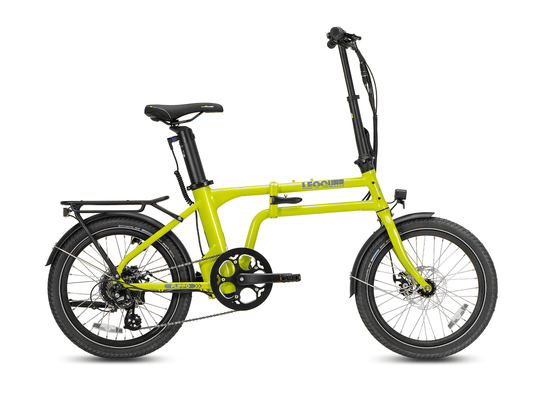
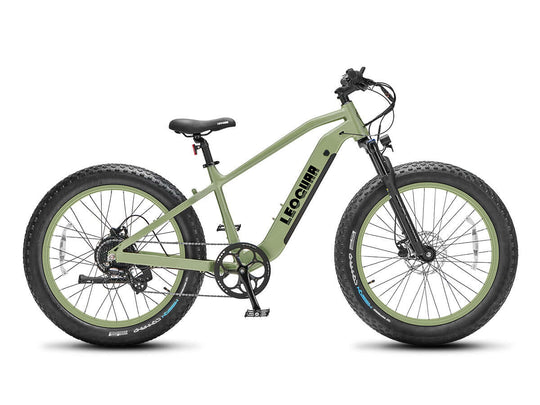
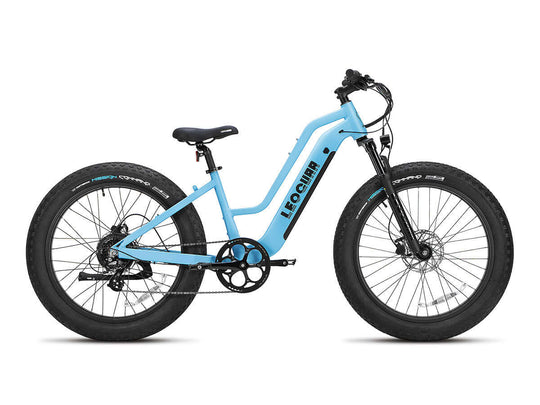
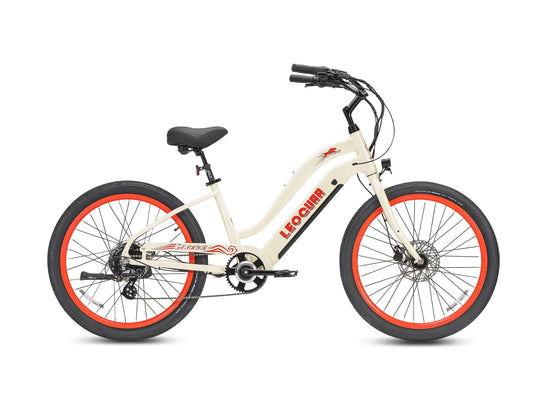
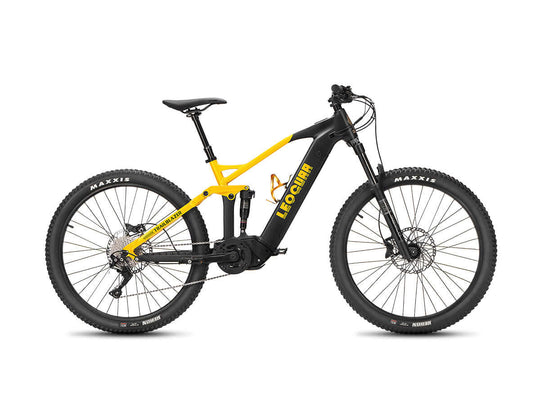
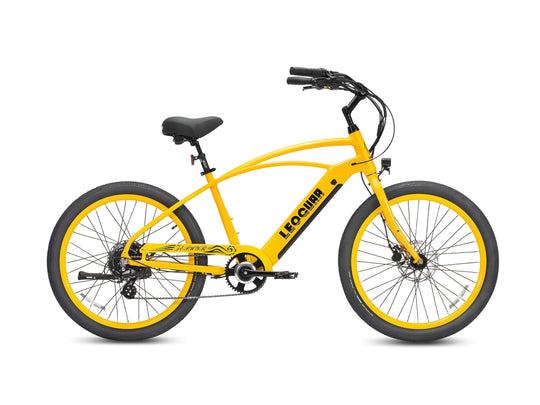
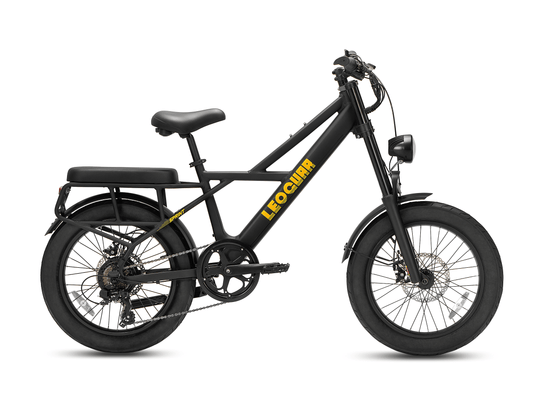
















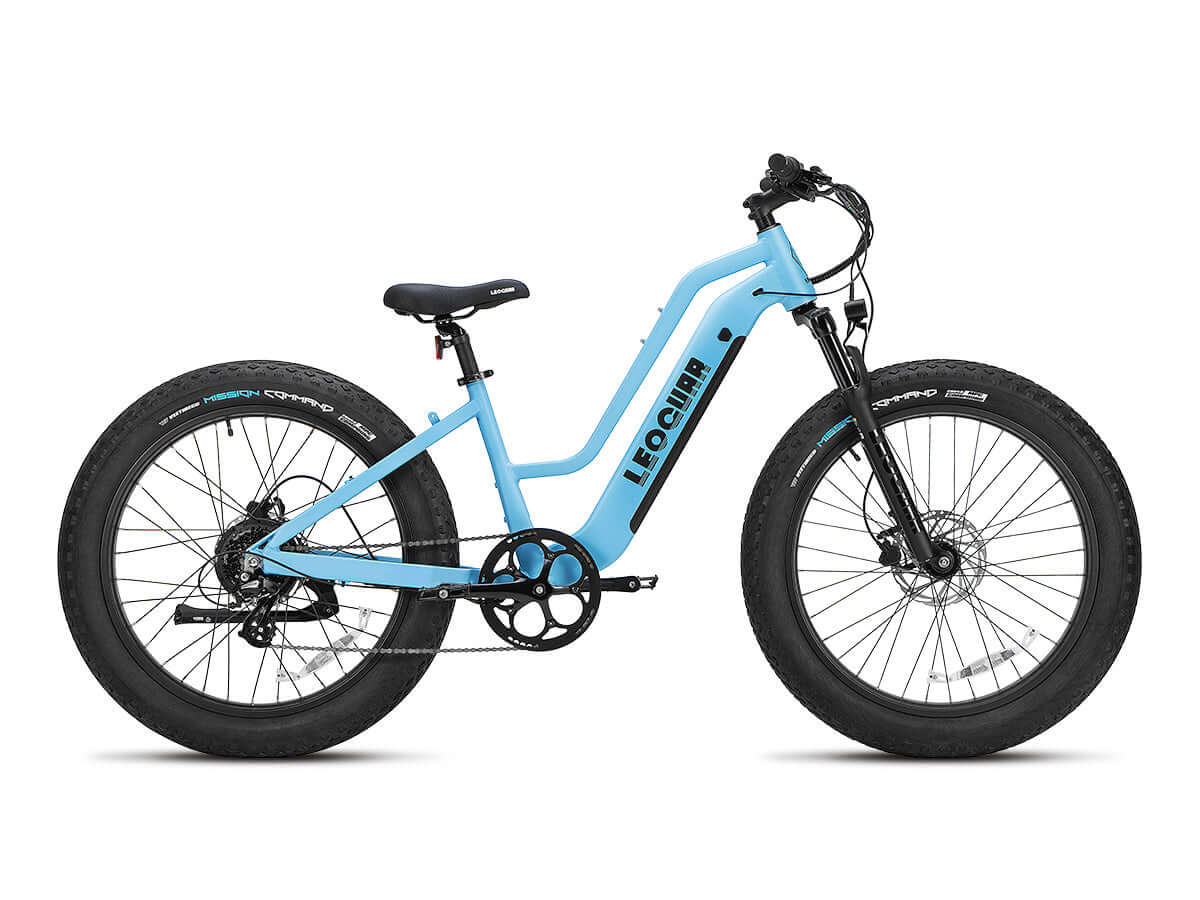








Leave a comment